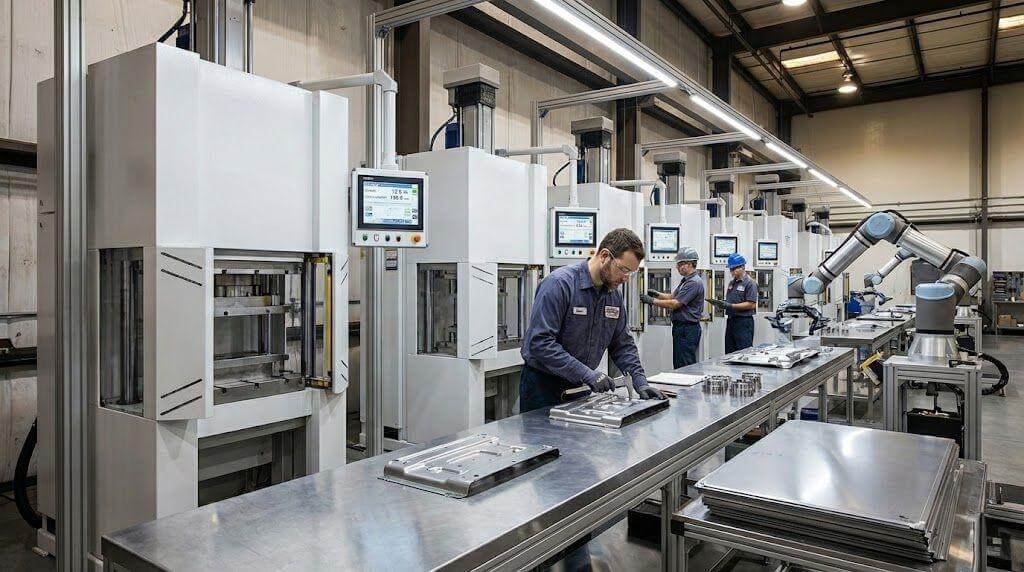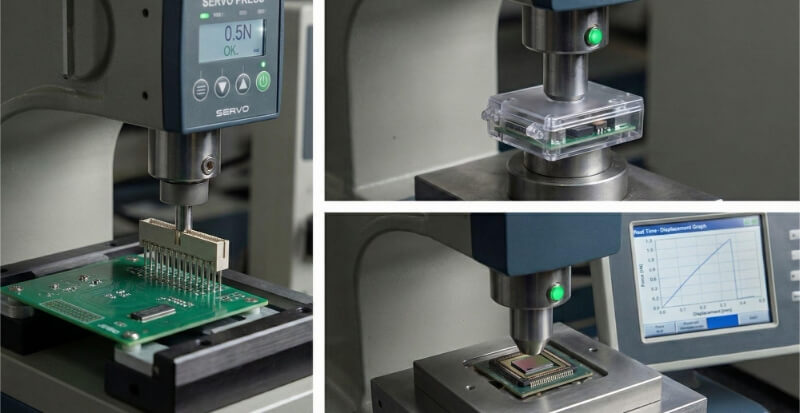Formowanie drutu kształtuje metalowy drut w precyzyjne projekty do niezliczonych zastosowań. Wiele branż polega na tym procesie, ale jego prawidłowe wykonanie wymaga umiejętności. Jeśli planujesz wykorzystać formowanie drutu w swoim następnym projekcie, ważne jest, aby zrozumieć podstawy. Dzięki odpowiedniej wiedzy można uniknąć błędów, obniżyć koszty, szybciej realizować projekty i osiągać lepsze wyniki.
Formowanie drutu może rozwiązać wiele potrzeb projektowych i produkcyjnych. Aby zrozumieć, jak to działa, przyjrzyjmy się podstawowym technikom, najlepszym materiałom i niektórym rzeczywistym zastosowaniom.
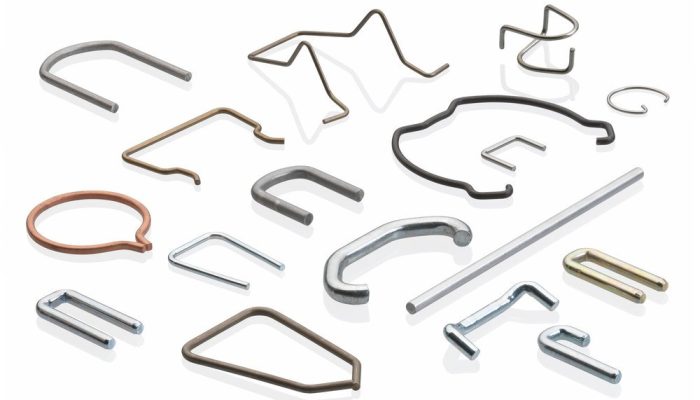
Czym jest formowanie drutu?
Formowanie drutu to proces polegający na gięciu, skręcaniu lub cięciu drutu metalowego w określone kształty i formy. Drut może być formowany przy użyciu narzędzi takich jak matryce, prasy lub maszyny CNC. Proste części obejmują haczyki lub pierścienie. Złożone kształty obejmują zaciski sprężynowe, ramy lub elementy medyczne. Kształt zależy od narzędzia, metody i materiału.
Drut jest zwykle dostarczany w zwojach lub prostych odcinkach. Jest on podawany do maszyny formującej. Maszyna wygina lub tnie go, aby dopasować go do projektu. Metoda ta zapewnia elastyczność kształtu i rozmiaru. Sprawdza się dobrze w przypadku krótkich serii i produkcji masowej.
Proces formowania drutu
Formowanie drutu obejmuje kilka kluczowych etapów. Każdy z nich wpływa na kształt, wytrzymałość i wygląd końcowej części.
Wybór przewodu
Pierwszym krokiem jest wybór odpowiedniego rodzaju drutu. Zależy to od przeznaczenia części, wymaganego poziomu wytrzymałości i budżetu.
Typowe materiały drutu obejmują stal nierdzewną, stal węglową, aluminium, mosiądz i miedź. Stal nierdzewna jest odporna na rdzę i korozję. Stal węglowa jest mocna i trwała. Aluminium jest lekkie i łatwe do kształtowania. Mosiądz i miedź są bardziej miękkie i często wykorzystywane do produkcji elementów elektrycznych lub dekoracyjnych.
Należy również wziąć pod uwagę średnicę, tolerancję i twardość drutu. Twardsze druty dobrze zachowują swój kształt, ale są trudniejsze do formowania.
Prostowanie drutu
Drut jest zwykle dostarczany w zwojach. Przed formowaniem należy go wyprostować. Ten krok usuwa wszelkie zagięcia lub krzywizny powstałe podczas zwijania. Prosty drut lepiej przechodzi przez maszyny. Pomaga to również w tworzeniu dokładniejszych części.
Prostowanie odbywa się za pomocą rolek lub systemów napinających. Narzędzia te ciągną i prowadzą drut, aby upewnić się, że pozostaje on prosty. Prawidłowe prostowanie utrzymuje drut w jednej linii i zapobiega skręcaniu podczas procesu formowania.
Operacja formowania
Po wyprostowaniu drut trafia do maszyny formującej. Tutaj jest gięty, cięty lub kształtowany zgodnie z projektem.
Istnieją różne sposoby formowania drutu:
- Narzędzia ręczne do drobnych prac
- Prasy krawędziowe do wykonywania ostrych zagięć
- Giętarki CNC do drutu o skomplikowanych kształtach
- Maszyny do zwijania pętli lub sprężyn
Wybór odpowiedniego narzędzia zależy od rodzaju drutu i wymaganego kształtu. Do prostych zadań wystarczające mogą być narzędzia ręczne. Jednak w przypadku dużych partii lub szczegółowych kształtów, automaty są szybsze i bardziej spójne.
Obróbka powierzchniowa
Po uformowaniu część może wymagać wykończenia powierzchni. Poprawia to wygląd, chroni przed rdzą lub zwiększa funkcjonalność części.
Typowe wykończenia obejmują:
- Cynkowanie aby zatrzymać rdzę
- Malowanie proszkowe dla koloru i dodatkowej ochrony
- Anodowanie aluminium
- Obróbka cieplna zmiana twardości lub elastyczności
Niektóre części są również polerowane lub gratowane w celu wygładzenia ostrych krawędzi. Dobre wykończenie sprawia, że część jest trwalsza i działa lepiej.
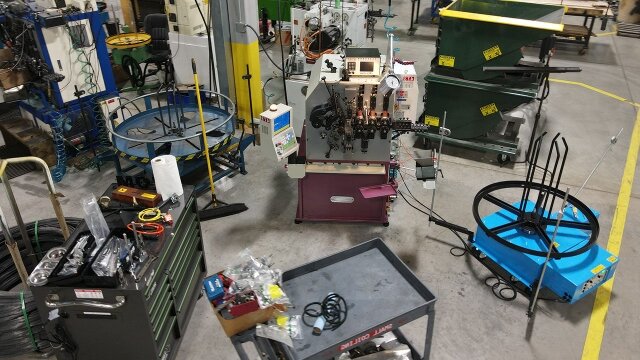
Rodzaje procesów formowania drutu
Stosowane są różne metody formowania drutu w zależności od kształtu, objętości i precyzji części. Każda metoda ma swoje zalety i najlepiej nadaje się do określonych zadań.
Pneumatyczne formowanie drutu
Pneumatyczne formowanie drutu wykorzystuje ciśnienie powietrza do poruszania narzędziami. Sprawdza się dobrze w przypadku prostych zagięć i średnich wielkości produkcji. Konfiguracja jest szybka, a ciśnienie pozostaje stałe. Systemy te są cichsze i łatwiejsze w utrzymaniu niż systemy hydrauliczne. Są one zwykle używane do cieńszych drutów.
Hydrauliczne formowanie drutu
Formowanie hydrauliczne wykorzystuje ciśnienie płynu do kształtowania drutu. Zapewnia większą moc niż systemy pneumatyczne, dzięki czemu lepiej sprawdza się w przypadku grubszego lub twardszego drutu. Systemy hydrauliczne dobrze nadają się do ciężkich zastosowań. Choć są wolniejsze, zapewniają większą siłę. Są dobrym wyborem, gdy najważniejsza jest wytrzymałość i dokładność.
Czterosuwakowe formowanie drutu
Maszyny czterosuwakowe formują drut za pomocą narzędzi, które zbliżają się z czterech stron. Wyginają, kształtują i tną drut w jednym cyklu. Maszyny te są szybkie i wydajne, szczególnie w przypadku produkcji wielkoseryjnej. Zmniejszają one potrzebę stosowania oddzielnych etapów formowania. Formowanie czterosuwowe jest idealne dla mniejszych części z wieloma zagięciami.
Gięcie drutu
Jest to najprostsza metoda. Polega ona na wyginaniu drutu w podstawowe kształty, takie jak kąty, krzywe lub litery U. Można to robić ręcznie lub maszynowo. Idealnie nadaje się do produkcji małoseryjnej, niestandardowych projektów lub prototypów. Ostateczna jakość zależy od narzędzi i umiejętności operatora.
Formowanie drutu na rolkach
W tej metodzie drut przesuwa się przez rolki, które kształtują go krok po kroku. Jest ona przydatna do tworzenia długich, prostych i szczegółowych profili. Formowanie rolkowe utrzymuje gładką powierzchnię i zapewnia wąskie tolerancje. Metoda ta jest powszechnie stosowana w przypadku części takich jak szyny, kanały lub prowadnice drutu.
Formowanie drutu nawojowego
Formowanie zwojów kształtuje drut w spirale lub zwoje. Służy do produkcji sprężyn, pierścieni i spiralnych szpilek. Maszyny owijają drut wokół formy, aby utworzyć kształt. Skok i średnicę zwoju można kontrolować z dużą dokładnością. Metoda ta jest popularna w przemyśle motoryzacyjnym i elektronicznym.
Gięcie drutu CNC
Gięcie drutu CNC wykorzystuje sterowane komputerowo maszyny do formowania drutu. Maszyna podąża za cyfrowym plikiem projektu i automatycznie kształtuje drut. Jest to idealne rozwiązanie dla złożonych części, które wymagają wąskich tolerancji. Maszyny CNC zwiększają szybkość, dokładność i spójność. Mogą pracować z różnymi rozmiarami drutu i materiałami.
Ręczne formowanie drutu
Formowanie ręczne wykorzystuje narzędzia ręczne do kształtowania drutu. Jest to przydatne w przypadku małych partii, niestandardowych części lub prototypów na wczesnym etapie. Metoda ta jest tania, ale wolniejsza. Wynik zależy w dużej mierze od doświadczenia i wiedzy operatora. Jest najlepsza, gdy projekty często się zmieniają lub potrzeba tylko kilku części.
Rodzaje form drucianych
Formowanie drutu może tworzyć szeroką gamę kształtów. Każdy z nich jest przeznaczony do określonego celu, takiego jak trzymanie, zawieszanie, zabezpieczanie lub wspieranie innych komponentów.
Opaski zaciskowe
Opaski zaciskowe do węży wykorzystują kształtowany drut do ciasnego mocowania węży na złączkach lub rurach. Zapewniają one równomierny nacisk i są często stosowane w instalacjach hydraulicznych i samochodowych. Zaciski te są mocne, proste i wielokrotnego użytku.
J Hooks
Haki J mają kształt litery "J" i służą do zawieszania przedmiotów, takich jak kable, przewody lub narzędzia. Są łatwe w montażu i demontażu. Często można je zobaczyć na placach budowy i w instalacjach kablowych.
Zawleczki
Zawleczki zabezpieczają koła lub części na wale lub osi. Zazwyczaj wykonane są z grubego drutu ze sprężynowym pierścieniem, który blokuje się na miejscu. Są one powszechnie stosowane w przyczepach, maszynach i sprzęcie rolniczym.
R Clips
Klipsy R, czasami nazywane sworzniami zaczepu, mają kształt przypominający literę "R". Wsuwa się je przez otwory w sworzniach lub wałkach, aby zapobiec ich wysunięciu. Klipsy te są łatwe w montażu i demontażu i są często używane w pojazdach i narzędziach.
S Hooks
Haki typu S mają podwójną krzywiznę, przypominającą literę "S". Jeden koniec zwisa z pręta lub szyny, podczas gdy drugi koniec przytrzymuje przedmiot. Są one często używane w kuchniach, warsztatach lub garażach do zawieszania sprzętu lub narzędzi.
Sprężyny
Sprężyny to zwinięte formy drutu przeznaczone do ściskania, rozciągania lub skręcania. Magazynują i uwalniają energię. Typowe rodzaje obejmują sprężyny ściskane, sprężyny rozciągane i sprężyny skrętne. Sprężyny można znaleźć we wszystkim, od długopisów po maszyny przemysłowe.
Formy z drutu gwintowanego
Te formy drutu mają gwinty na jednym końcu, co pozwala im wkręcać się w części, takie jak śruby. Są one stosowane w regulowanych zaciskach, łącznikach lub urządzeniach blokujących, gdzie wymagana jest zarówno wytrzymałość, jak i zdolność mocowania.
Haki użytkowe
Haki użytkowe mają różne kształty i rozmiary. Są one przeznaczone do mocowania narzędzi, węży, kabli lub sprzętu. Wiele z nich jest pokrytych gumą lub tworzywem sztucznym, aby zapobiec zarysowaniom. Są pomocne w garażach, sklepach i domowych magazynach.
Kosze druciane
Kosze druciane są formowane poprzez zginanie i spawanie drutu w otwartą siatkę. Są one używane do przechowywania, przenoszenia lub eksponowania przedmiotów. Powszechne w środowiskach medycznych, kuchennych i detalicznych, zapewniają przepływ powietrza i widoczność.
Wyświetlacze druciane
Ekspozytory druciane są przeznaczone do prezentowania produktów w sklepach. Te regały, półki lub stojaki są lekkie, ale wytrzymałe. Są łatwe do przenoszenia i sprawiają, że produkty są widoczne i dostępne dla klientów.
Osłony druciane
Osłony druciane mają kształt klatek i są używane do ochrony sprzętu, takiego jak światła, wentylatory lub czujniki, przed uszkodzeniem. Często można je znaleźć w fabrykach, siłowniach i magazynach. Pomagają zapobiegać wypadkom spowodowanym uderzeniem lub kontaktem.
Sita druciane
Sita druciane wykorzystują tkany lub spawany drut do filtrowania lub oddzielania materiałów. Przepuszczają powietrze, światło lub płyny, blokując jednocześnie ciała stałe. Są one stosowane w filtrach, oknach, sitach i maszynach przemysłowych.
Z Clips
Klipsy Z są wygięte w kształt litery Z. Są one używane do montażu elementów takich jak panele lub znaki na ścianach. Jeden element mocuje się do ściany, a drugi do przedmiotu. Blokują się razem, umożliwiając szybką instalację i demontaż.
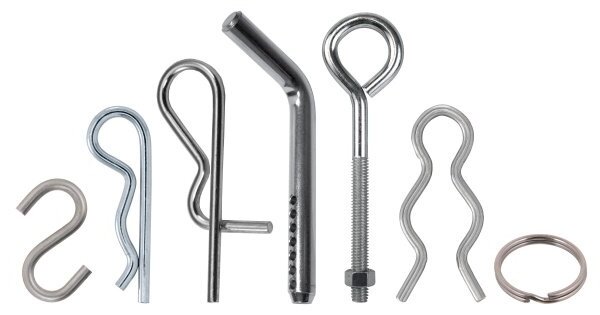
Opcje materiału przewodu
Wybór odpowiedniego materiału drutu jest jednym z najważniejszych etapów formowania drutu. Materiał wpływa na sposób formowania drutu, jego wytrzymałość, trwałość i wygląd. Oto najpopularniejsze opcje:
Stal i stal nierdzewna
Drut stalowy jest mocny, niedrogi i łatwy w kształtowaniu. Jest często wykorzystywany do produkcji elementów konstrukcyjnych, zacisków i wsporników. Gdy potrzebna jest dodatkowa wytrzymałość, często wybierana jest stal węglowa.
Stal nierdzewna wyróżnia się odpornością na rdzę. Wytrzymuje również dłużej w warunkach wilgotnych lub na zewnątrz. Dobrze nadaje się do części spożywczych, narzędzi medycznych lub sprzętu zewnętrznego. Gatunki takie jak 304 są używane do celów ogólnych. Gatunek 316 sprawdza się lepiej w słonych lub trudnych warunkach.
Zarówno stal, jak i stal nierdzewna mogą być wytwarzane w postaci sprężyn lub litych drutów. Materiały te są szeroko stosowane w przemyśle motoryzacyjnym, budowlanym i AGD.
Stopy aluminium i miedzi
Drut aluminiowy jest lekki i nie rdzewieje łatwo. Łatwo go zgiąć, nawet ręcznie. Dlatego też jest często wykorzystywany do produkcji elementów dekoracyjnych, części elektrycznych lub lotniczych. Nie jest tak wytrzymały jak stal, ale jest znacznie lżejszy.
Drut miedziany bardzo dobrze przewodzi prąd i ciepło. Jest miękki i łatwy do formowania. Jest powszechnie stosowany w elektronice, szczególnie w przewodach uziemiających i złączach. Mosiądz jest stopem na bazie miedzi. Jest mocniejszy niż czysta miedź i ma kolor przypominający złoto. Jest często stosowany w hydraulice, armaturze i elementach dekoracyjnych.
Metale te są bardziej miękkie niż stal, ale łatwiej się z nimi pracuje, gdy w projekcie wymagane są drobne szczegóły.
Metale specjalne
Drut tytanowy jest wytrzymały, lekki i odporny na rdzę. Sprawdza się w ekstremalnych środowiskach, takich jak ocean, urządzenia medyczne czy samoloty. Kosztuje więcej niż inne materiały, ale wytrzymuje dłużej w trudnych warunkach.
Drut mosiężny jest używany, gdy wymagany jest błyszczący wygląd i odporność na rdzę. Jest powszechnie stosowany w instrumentach muzycznych, znakach i oprawach oświetleniowych. Stopy niklu są wybierane, gdy części muszą wytrzymać ciepło lub zużycie.
Metale specjalne są wybierane, gdy zwykłe materiały nie są w stanie sprostać zadaniu. Są one wykorzystywane do produkcji niestandardowych, wysokowydajnych lub krytycznych dla bezpieczeństwa części.
Korzyści z formowania drutu
Formowanie drutowe oferuje kilka zalet, które sprawiają, że jest to mądry wybór dla wielu potrzeb produkcyjnych. Korzyści te pomagają obniżyć koszty, zwiększyć szybkość i wspierać elastyczność projektowania.
Lekki i wytrzymały
Części formowane z drutu oferują wysoką wytrzymałość bez zwiększania wagi. Jest to szczególnie przydatne w branżach takich jak motoryzacja, lotnictwo i elektronika. Otwarte kształty zapewniają wytrzymałość przy mniejszej ilości materiału. Można tworzyć trwałe części, które nadal spełniają rygorystyczne limity wagowe.
Możliwość dostosowania i opłacalność
Formowanie drutu jest łatwe do dostosowania. Kształty, rozmiary i zagięcia można dostosować do konkretnych potrzeb. Niewielkie zmiany w projekcie można wprowadzić bez znacznego wzrostu kosztów. Koszty narzędzi są często niższe niż w przypadku części litych lub tłoczonych. Sprawia to, że formowanie drutowe nadaje się zarówno do prototypów, jak i dużych serii.
Zmniejszona ilość odpadów i wydajne przetwarzanie
Formowanie drutu wykorzystuje tylko potrzebną ilość materiału. Nie ma potrzeby cięcia lub pozostawiania resztek. Pozwala to utrzymać koszty materiałów na niskim poziomie. Zautomatyzowane maszyny pomagają przyspieszyć produkcję przy zachowaniu spójnych kształtów. Wydajne formowanie oszczędza czas i zmniejsza liczbę etapów pracy.
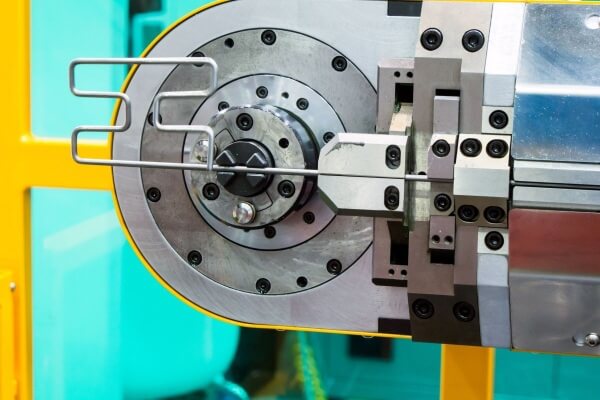
Zastosowania części formowanych z drutu
Części formowane z drutu są wykorzystywane w wielu gałęziach przemysłu. Ich wytrzymałość, niska waga i elastyczne kształty sprawiają, że idealnie nadają się zarówno do prostych, jak i złożonych produktów.
Motoryzacja
W pojazdach formy druciane są używane jako zaciski, nawiasy, źródłaoraz elementy złączne. Części te utrzymują panele, prowadzą kable i podtrzymują węże. Muszą być odporne na wibracje, ciepło i zużycie. Formy druciane pomagają zmniejszyć wagę, jednocześnie utrzymując części bezpiecznie na miejscu.
Lotnictwo i kosmonautyka
Części lotnicze muszą być zarówno wytrzymałe, jak i lekkie. Formy druciane są używane do zacisków, agrafek, prowadnic kabli i wsporników izolacji. Tytan i stal nierdzewna są często używane ze względu na ich odporność na korozję i wytrzymałość. Precyzja ma kluczowe znaczenie w tej dziedzinie, a maszyny do formowania CNC są szeroko stosowane.
Urządzenia medyczne
Druty odgrywają kluczową rolę w narzędziach i urządzeniach medycznych. Są one stosowane w narzędziach chirurgicznych, tackach, ramach ortopedycznych i drutach prowadzących. Stal nierdzewna i tytan są standardem ze względu na ich biokompatybilność i czyste wykończenie. Części muszą być precyzyjne, bezpieczne i łatwe do czyszczenia.
Produkty konsumenckie
W przedmiotach codziennego użytku druciane formy są wszędzie. Można je zobaczyć w narzędziach kuchennych, stojakach do przechowywania, lampach i klipsach. Utrzymują, zawieszają i wspierają przedmioty, pozostając przy tym lekkimi i ekonomicznymi. Można je kształtować zarówno pod kątem funkcjonalności, jak i stylu.
Urządzenia do sprzedaży detalicznej
Sklepy używają drucianych form do ekspozycji, haczyków i półek. Elementy te pomagają uporządkować produkty i sprawiają, że ekspozytory są łatwe w regulacji i utrzymaniu. Formy druciane są lekkie, wytrzymałe i często powlekane, aby pasowały do wyglądu marki. Są szybkie w instalacji i łatwe do wymiany lub przenoszenia.
Wnioski
Formowanie drutem to elastyczna i wydajna metoda kształtowania metalu w funkcjonalne części. Obsługuje szeroką gamę materiałów, od stali po tytan. Współpracuje z wieloma metodami formowania, od prostych narzędzi ręcznych po szybkie maszyny CNC. Formowanie drutowe jest stosowane w różnych branżach, w tym motoryzacyjnej, lotniczej, medycznej i detalicznej.
Potrzebujesz niestandardowych części do formowania drutu do swojego projektu? Wspieramy prototypowanie i masową produkcję z krótkim czasem realizacji i wąskimi tolerancjami. Skontaktuj się z nami już dziś aby uzyskać bezpłatną wycenę lub udostępnić swój projekt do recenzji.
Hej, jestem Kevin Lee

Przez ostatnie 10 lat byłem zanurzony w różnych formach produkcji blach, dzieląc się tutaj fajnymi spostrzeżeniami z moich doświadczeń w różnych warsztatach.
Skontaktuj się z nami

Kevin Lee
Mam ponad dziesięcioletnie doświadczenie zawodowe w produkcji blach, specjalizując się w cięciu laserowym, gięciu, spawaniu i technikach obróbki powierzchni. Jako dyrektor techniczny w Shengen, jestem zaangażowany w rozwiązywanie złożonych wyzwań produkcyjnych i napędzanie innowacji i jakości w każdym projekcie.

